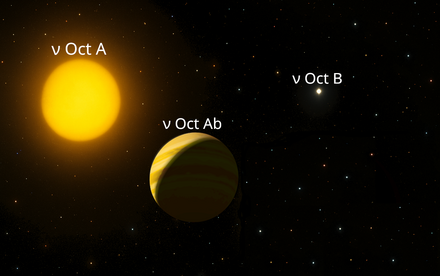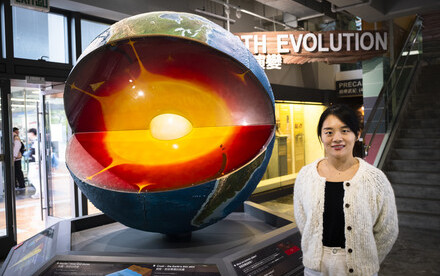23 Jun 2020
HKU-codeveloped automated laser-scanning ‘hunter drone’ seeks out fossils, minerals and biological targets

Figure 1. New HKU-codeveloped automated laser-scanning ‘hunter drone’ seeks out fossils, minerals and biological targets at night (artist visualised image). Image credit: Thomas G Kaye & Michael Pittman.
Science fiction has machine-intelligent hunter drones and they have now become science fact with a new HKU-codeveloped autonomous ‘hunter drone’ that seeks out targets at night using a scanning laser (Figure 1).
This technique - Laser-Stimulated Fluorescence (LSF) - was codeveloped at HKU and has been highly successful in palaeontology, making fossil bones glow and revealing otherwise invisible details like skin and cartilage (note 1). The application of LSF to an aerial system is possible because of the laser’s ability to project over great distances with little loss in power.
HKU Research Assistant Professor Dr Michael Pittman (Vertebrate Palaeontology Laboratory, Division of Earth & Planetary Science and Department of Earth Sciences) and his colleague Thomas G Kaye of the Foundation for Scientific Advancement made this a reality by developing a fully autonomous LSF drone system. “Nicknamed ‘Laser Raptor’, this system is designed to more efficiently seek out fossils exposed on the surface in the field”, said Dr Pittman.
Loaded with pre-programmed flight paths during the day, this prototype was launched at night in the badlands of Arizona and Wyoming, USA to search for fossils (Figure 1). Laser Raptor flies rapidly to search locations using its on-board navigation and then descends and maintains an altitude of 4 metres above ground so it can ‘mow the lawn’ in search of glowing targets as small as a thumbnail. After each “mission” is complete, a video of the laser scan is processed to find hot spots that are investigated the next day (Figure 2), leading to the recovery of new fossil specimens (Figure 3).
Fluorescence is extremely sensitive to differences in mineral composition. Although Laser Raptor was designed to locate fossils, it is ready to seek out a whole range of fluorescent targets including minerals e.g. to study rare and unusual geology or in search of mining materials like gemstones, certain organisms like scorpions, shellfish and cyanobacteria, and even archaeological artefacts and structures.
Asked about future plans, Thomas Kaye replied, “As members of HKU’s Laboratory of Space Research, Dr Pittman and I are currently working to develop LSF applications for the study of geologic landscapes beyond Earth.”
Note 1 press release (March 2017): https://www.hku.hk/press/press-releases/detail/15989.html
The paper is published in Methods in Ecology and Evolution and can be accessed here:
https://besjournals.onlinelibrary.wiley.com/doi/full/10.1111/2041-210X.13402
Please visit the video at here.
 |
| Figure 2. Hot spot on laser ‘scan strip’ produced by the Laser Raptor drone system is ~2cm wide fragment of a fossil mammal tooth. Image Credit: Thomas G Kaye & Michael Pittman. |
 |
| Figure 3. ~2cm wide fragment of a fossil mammal tooth found using the Laser Raptor drone system. The tooth belongs to a brontothere which lived in ancient Wyoming, USA ~35 million years ago. Scale is 5mm. Image Credit: Thomas G Kaye & Michael Pittman. |







